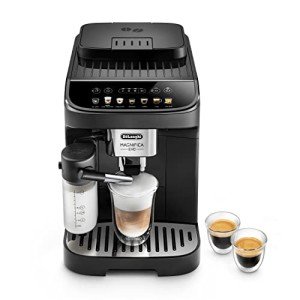Bean To Cup Coffee Beans: Elevate Your Coffee Experience
Coffee has become more than just an early morning ritual; it represents a lifestyle for many. In current years, the trend of "bean to cup" coffee has gotten considerable traction, appealing to coffee enthusiasts who want an exceptional brew experience. This in-depth guide will dig deep into the principle of bean to cup coffee, its benefits, numerous kinds of coffee beans, and even the very best approaches for brewing.
What is Bean to Cup Coffee?
Bean to cup coffee refers to the procedure of making coffee directly from whole coffee beans. The "bean to cup" journey consists of numerous stages: selecting quality beans, grinding them freshly, brewing them using a system developed specifically for this approach, and delighting in the last item. This procedure is often helped with by specialized coffee machines that feature incorporated grinders.
The Bean to Cup Coffee Process
The journey from bean to cup usually incorporates the following steps:
- Selection of Beans: Picking premium beans from various areas.
- Grinding: Freshly grinding the coffee beans to maintain flavor.
- Brewing: Using hot water to extract coffee flavors according to choices.
- Taking pleasure in: Relishing the abundant taste and aroma directly from freshly brewed coffee.
Benefits of Using Bean to Cup Coffee Beans
- Freshness: Beans can be ground fresh every time, maintaining the natural scents and tastes.
- Quality assurance: Consumers have higher control over the type and quality of beans utilized.
- Customization: Easily customized brews from the grind size to the coffee strength.
- Convenience: Many bean to cup machines are user-friendly, making coffee preparation simple and easy.
Advantages Table
| Advantages | Description |
|---|---|
| Freshness | Maintains maximum aroma since the coffee is ground freshly. |
| Quality assurance | Users pick their coffee beans for wanted flavor. |
| Personalization | Direct control over grind size, strength, and more. |
| Convenience | Easy operation with very little actions for developing. |
Kinds Of Coffee Beans
When it pertains to bean to cup coffee, the choice of beans can significantly affect the flavor profile. The two primary kinds of coffee beans are:
- Arabica: Known for its sweet and soft taste, Arabica beans are the most popular worldwide, accounting for about 70% of the world's coffee production. They frequently have a vast array of tastes, from fruity to nutty.
- Robusta: These beans have a stronger, harsher taste compared to Arabica and consist of more caffeine. Robusta beans are typically used in espresso blends for included body and crema.
Other Types of Beans (Brief Overview)
- Liberica: Known for its unique and unique profile, typically referred to as fruity and floral.
- Excelsa: A variety of Liberica, often utilized to provide tartness in blends.
Popular Bean to Cup Machines
There's a vast array of bean to cup coffee machines on the market, catering to the differing requirements of coffee drinkers. Here's a list of popular brand names and models:
- DeLonghi Magnifica: Known for its flexibility and ease of use.
- Jura E8: Offers a high-end experience with its sleek design and advanced features.
- Breville Oracle Touch: Combines automatic functions with manual controls for the best of both worlds.
Frequently asked questions about Bean to Cup Coffee Beans
Q1: How long do coffee beans last?A1: Roasted coffee
beans normally last for about 2-4 weeks when kept in an airtight container, away from heat and light. For ideal flavor, it is best to consume them as fresh as possible. Q2: Is it much better to grind coffee beans prior to brewing?A2: Yes, grinding coffee beans right before developing takes full advantage of freshness and flavor. Pre-ground coffee
can lose its optimum taste within minutes. Q3: Can I use any kind of coffee bean in a bean to cup machine?A3: Most bean to cup machines can accommodate various coffee beans,
however it's recommended to examine your machine's requirements for the very best outcomes
. Q4: How often should I clean my bean to cup machine?A4: It is recommended to clean your machine every 1-2 weeks, depending on use. In-depth cleaning must be done a minimum of
when a month. Brewing Techniques While bean to cup machines
simplify the brewing procedure, different methods can be utilized for the very best results: Espresso: Strip down the essence of the bean and provide a concentrated shot with rich flavors. French
Press: A method that enables the coffee grounds to steep, yielding an extensive body and flavor. Pour-over:
- A technique that enables precise control over brewing time and temperature level, leading to a more fragile taste extraction. Coffee Machine Whole Beans to cup coffee experience goes beyond traditional developing techniques, using an intimate relationship with the coffee-making process.
- By going with top quality beans selected for individual choices and making use of effective machines, coffee enthusiasts can delight in an abundant and fresh cup
of coffee every day. The capability to manage every element of the brewing procedure raises it from an easy drink to a crafted experience, guaranteeing that each cup reflects individual taste and quality. Accepting the bean to cup method is not simply about drinking coffee; it's about savoring every minute, scent, and taste that comes together in a perfect cup.

